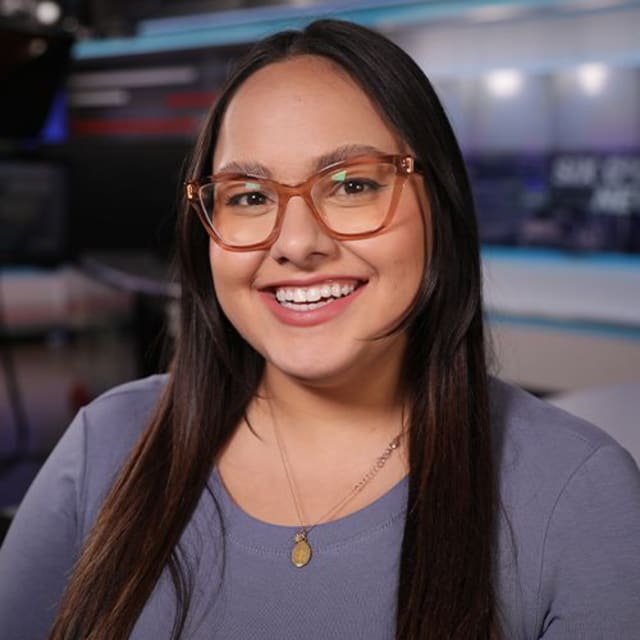SAN ANTONIO – This week, Governor Greg Abbott announced his plan to re-open businesses amid the coronavirus pandemic. While malls and restaurants will be able to open their doors soon, schools will remain closed to in-person learning through the end of the school year.
After almost two months of at-home learning, Doctor Michael Villarreal with UTSA’s Urban Education Institute is working to determine the pros and cons of distance learning in the event that schools have to do it again.
The research institute collects data from schools and students to determine what educational tools work best for the students in Bexar County.
Dr. Villarreal, who is a former Texas representative and mayoral candidate in San Antonio, says “we have a big urban community, very diverse set of public school students and families that come from all different neighborhoods, different cities, and economic circumstances. And we want to help our school districts plan for the next semester.”
Right now, the research institute is focusing on distance learning.
“We suspect that distance learning is going to continue with us to some degree,” Villarreal said.
Current data collection consists of calling students, parents and teachers with questions about their experience with distance learning so far. Villareal hopes this data can answer questions like ‘How much have students been impacted by the coronavirus pandemic? Which students are impacted most? What is distance learning good for? And how can we improve virtual lesson plans?’
Villarreal has already observed some obvious pros. He says some students are thriving off of the freedom to work at their own pace and to collaborate with classmates. With video conference calls and online course work, Villarreal also expects tech literacy to improve not just among students but adults too.
“This technology of connecting to the classroom, connecting to teachers, connecting the lessons is a real innovation,” he said. “It’s allowing us to really expand the experience. And so we need to learn from it and get better at delivering this kind of opportunity going forward.”
But in times of crisis, the digital divide has never been more apparent.
“School is, I believe we’re going to look back and discover, a very important equalizer. It’s a place where all kids can go and find caring adults, can connect to their peers, can have focused, structured time to read, to study, to learn, to communicate. And in this new scenario that we’re all living through that is taken away,” Villarreal explained.
RELATED: SAISD Foundation raising money to pay monthly internet service fees for students
Not every student has access to the internet in their home or even a parent present with the ability to help like a teacher would.
KSAT viewers wanted us to ask Dr. Villarreal ‘What are schools doing to assist students in need?’
Villarreal says he’s seen plenty of school districts finding creative ways to provide internet access to students in areas that have shown to lack service. For example, the San Antonio Independent School district has turned its buses into mobile hotspots and found funds to purchase tablets for students. The Southwest Independent School district has turned its vacant campuses into mega Wi-Fi centers.
RELATED: Where students in San Antonio area can get free Wi-Fi amid coronavirus pandemic
“There’s been a lot of hustle to close the digital divide. However, having technology, having access to Wi-Fi is not enough. There are a whole lot of other family circumstances that impact learning,” Villarreal said.
One contributing factor, specifically for high school or college students, could be the pressure to work. Villarreal laid out a scenario where a teenager was working more than ten hours a day to help support their family financially during the pandemic.
SAQ: Alamo Colleges just announced a plan to keep students in school and on track by giving out scholarships, which would cover tuition and fees and allow them to use financial aid for living expenses. Do you see other schools implementing similar plans?
Villarreal says schools are experimenting with all kinds of relief efforts citing some colleges omitting the SAT and ACT score requirements on applications. This proposes a unique opportunity for the research institute to determine how changes like this will affect the future of higher education.
“Maybe we’re going to learn that some of the things that we were doing before that we thought were really important because we always have been doing it a certain way aren’t as important,” Villarreal said.
As we continue to adapt, Villarreal offers some advice to parents who are concerned about the impact of distance learning.
“I think this is an opportunity to sort of go back to the basics and encourage students to just read a book. If they have a musical instrument, just try to practice to do things that maybe they didn’t have time to take on before this event. Now, maybe there’s some time to learn how to take out grandma’s sewing machine, learn how to cook a meal,” Villarreal said.
Find more answers and ask your own questions on our SAQ page. Watch anchor Steve Spriester ask local leaders your questions weeknights at 6 p.m. on KSAT12 and 9 p.m. on KSAT-TV and KSAT.com. You can also sign up for our free SAQ newsletter to get answers to the most common questions in your inbox.




